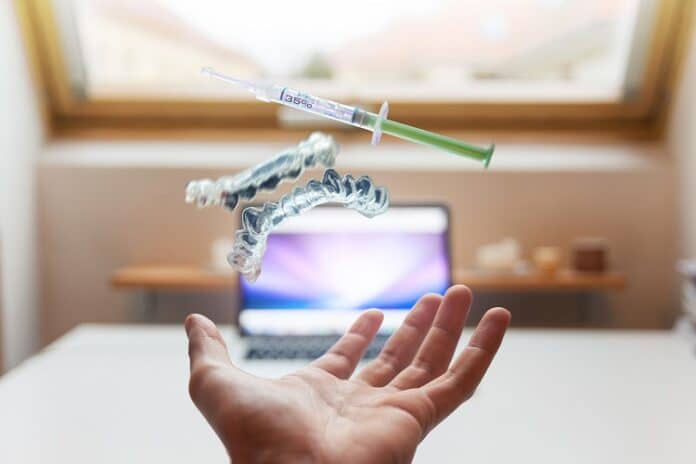Technology is changing our lives every day, and in many ways, we do not see or notice. The advancements in medical technology and pharmaceutical product development are helping to create a future where many of the most common diseases and ailments can be treated quickly and effectively. The journey a new drug takes from an idea to the shelves of a pharmacy is a long and complicated one, but it must surpass these challenges if people are going to be able to surpass the health challenges of the future.
From Concept To Capsule
The development of new pharmaceutical drugs is a complex, lengthy process involving numerous intricate steps, often spanning over a decade from initial conception to final availability in the market. The journey begins with understanding and identifying a particular health problem, disease, or condition that needs a new or more effective treatment. After this comes the pre-discovery stage where the potential biological target is identified; the disease-causing agent or process that the drug will address.
Once this target is identified, researchers embark on the discovery phase where various chemical and biological substances are created and tested in labs for their efficacy against the target. This phase may involve the synthesis of hundreds or even thousands of potential compounds.
This phase is critical as it forms the basis for applications to regulatory bodies for permission to proceed to human clinical trials. Every drug on the pharmacy shelf has undergone this complex journey, demonstrating the intricate ballet of science, logistics, and regulatory compliance that is drug development.
The Role Of Biotech And Synthetics
Biotechnology and synthetic biology play pivotal roles in the process of designing new medicines. In essence, biotechnology applies the principles of biology and the tools of science to create pharmaceuticals that can treat diseases effectively. It involves manipulating living organisms, or parts of organisms, to make products that improve human health.To further accelerate advancements in this field, biotech consulting firms contribute their expertise by offering strategic insights and innovative solutions to pharmaceutical companies and research institutions.
Synthetic biology is a more recent discipline. It is often described as the design and construction of new biological entities such as enzymes, genetic circuits, and cells. It’s like engineering at a molecular level. With the aid of computational models and genetic engineering techniques, synthetic biologists create entirely new microorganisms that produce specific therapeutic compounds or modify existing ones to enhance their efficacy. Both these scientific fields bring innovation to drug development, transforming possibilities into life-saving medications and equipping us for the health challenges of the future.
Testing For Safety And Quality
Quality assurance is a critical aspect of drug development, ensuring that the final product is safe for consumption and delivers the expected therapeutic effects. One of the key procedures in this phase is titration, a common laboratory method of quantitative chemical analysis used to ascertain the concentration of a particular substance in a sample.
In the pharmaceutical industry, titration plays a pivotal role in determining the purity and quality of the drug. It can help identify the presence of impurities, validate the potency of the active pharmaceutical ingredients, and ensure the correct pH level in the drug formulation. Karl Fischer titration from Metrohm provides a scalable and reliable solution to pharmaceutical titration testing. Karl Fischer titration gives manufacturers reliable and accurate volumetric and coulometric water content determination when testing their products for safety.
Ensuring Safety Through Preclinical Trials
Preclinical trials represent a significant phase in the drug development process. It is during this stage that potential pharmaceutical compounds are subjected to exhaustive tests before being introduced to human subjects.
The trials are conducted in laboratories and on animal models, providing an initial understanding of the drug’s safety profile and therapeutic potential. Scientists study the drug’s behaviour at a cellular level, its interaction with disease-causing agents, the ideal dosage for maximum effect, potential side effects, and toxicity levels. The data gathered during this phase also helps to predict how the drug might behave in the human body.
Preclinical trials form a crucial safety net, preventing harmful or ineffective drugs from progressing further, thereby safeguarding patient health during the subsequent stages of drug development.
The Four Phases Of Human Trials
Once a drug successfully navigates preclinical trials, it advances to clinical trials involving human subjects. This stage is subdivided into four distinct phases, each designed to answer specific research questions while ensuring participant safety and collecting data for regulatory approval.
Phase I trials involve a small group of healthy volunteers, usually between 20 to 100, to assess the drug’s safety, and dosage range, and identify side effects. Researchers evaluate how the body processes the drug and its physiological effects.
In Phase II, the drug is administered to a larger group of people. This phase aims to evaluate the drug’s effectiveness and further monitor its safety.
Phase III trials involve hundreds to thousands of patients in randomised and blind testing to confirm the drug’s effectiveness, monitor side effects, compare it to commonly used treatments, and gather information for its safe usage.
Finally, Phase IV trials occur post-marketing to provide additional information including the drug’s risks, benefits, and optimal use.
From Laboratory to Pharmacy
After a new drug has passed all testing phases and gained regulatory approval, the journey isn’t over. The next crucial steps involve manufacturing the drug at a large scale and ensuring its effective distribution to patients in need.
The manufacturing process must uphold the highest standards of quality control and assurance. It involves the production of active pharmaceutical ingredients, formulation of these ingredients into a consumable form like tablets or injections, packaging, and labelling. Every stage demands rigorous checks to ensure consistency, safety, and efficacy.
Following manufacturing, the pharmaceutical distribution network takes over. This system must guarantee that medicines are stored and transported under optimal conditions to maintain their integrity. It’s a complex logistic operation that demands precise coordination to ensure drugs reach the pharmacies, hospitals, and healthcare facilities in time. From laboratory to pharmacy, every step is meticulously planned and executed, reflecting the immense effort behind every medicine that helps us lead healthier lives.
Beyond treating diseases, new drugs can also help prevent illnesses. Advancements in personalised medicine promise to tailor treatments to individual genetic profiles, maximising therapeutic efficacy while minimising side effects. New pharmaceutical drugs have the potential to banish many illnesses and diseases from human health once and for all, and created a healthier and more successful future for every one of us.





